-
Content Count
3,341 -
Joined
-
Last visited
Content Type
Profiles
Forums
Calendar
Posts posted by Tom Fremont
-
-
If the doors are original the holes are already there

-
I was told many years ago by Darryl Uprichard of Racetorations that they set all their floats to 5mm. ( This must only apply to the brass type. )
I did this with my triples and it made a critical difference.
Later I got a clear gauge to measure the fuel depth from the top of the well ( where the main tube screws in - remove to check ). I found that 5mm with 3-ring vintage Italian 40DCOE-18s this gives 27mm depth. Oddly, older 40DCOE-18s with brass shafts on another engine gives 27mm with a setting of 8mm. Such depth is the key to when the main systems enters the game, the higher the level the lower the rpm. IMO 25mm is the absolute highest setting and not necessary for TRs and I would avoid going that high for the reason Laurent seems to have with his.
Regardless of float type I suggest attaining 27 or 28mm fuel level, equal between carbs. For plastic floats this may correspond to 12mm but do confirm.
Tom
-
On 3/29/2024 at 1:10 PM, michaeldavis39 said:
This is a work of art in its own right and it's obvious with circa (20) sections welded together it's not commercially viable.
Richard Good's " inability " to build it in stainless must mean " for an acceptable price ".
From what I've seen on this thread the GOODPARTS design in coated mild steel is still the competitively priced best performance option. I would be quite surprised if he doesn't know whether the RHD cars will accommodate it, less surprised if they cannot.
I have no financial interest and provide this link just FYI:
https://www.goodparts.com/product-category/exhaust/
-
6-3-1 pairing 1-6,2-5 and 3-4 gives them equal firing order spacing. Richard Good's version has equal length primaries and secondaries which he tested against Phoenix's version where they are apparently unequal and found a big difference in his favor. The downside is Richard " cannot build it in stainless " ostensibly due to the metal's relative reluctance to bend into the tight radius required for 1 & 6 cylinders where mild steel can. He has his " ceramic " coated in (3) different temperature ranges.
I have experience with this on my trick engine with very high lift cam and triple DCOEs ( of course
 ) and it brought in the mid range where a 6-2-1 from Racetorations would not, no matter what I tried in the Webers. Moreover, it did so with (1) size smaller main jet and (7) sizes larger air corrector!
) and it brought in the mid range where a 6-2-1 from Racetorations would not, no matter what I tried in the Webers. Moreover, it did so with (1) size smaller main jet and (7) sizes larger air corrector!
My CP spec driver OTOH does fine with the 6-2-1 ( which is why I tried it first on the trick engine ).
My takeaway is the breathing is optimized with a proper [ GOODPARTS type ] 6-3-1 and (6) throttles. Note that triple singles cannot draw evenly due to varying firing order spacing on an inline 6.
Richard Good acknowledges that every type of manifold design makes compromises. In the case of his, I suppose a 6-1 banana bunch style full-race manifold will beat it, but not make it as drivable on the street.
Tom
-
I've never come across this, only too loose and have had some success peening the yoke holes back into tight[er] mode.
One problem I've had is where a few thousandths of clearance between the cap and circlip caused a sort of rattling on low speed over-run.
I now use only GKN or GMB kits; these are tight that way.
-
Due to !@#$ repro release cables which suck themselves into the vinyl cover when tugged hard I had to find a way to do it at a show 150 miles away:
(LHD)
Remove the glove box
Pull out the rubber grommet for the choke and heater cables
With an assistant pressing down on the bonnet proximate to the latch, trip the latch with a long screwdriver from the inside through the grommet hole

Do tell if this wouldn't work on RHD and why

-
I have the spin-on filter conversions on both of my TR250s since the 1900s and don't remember the pressure time lag prior but neither suffers from this issue.
One has a cooler and the other doesn't, and the former has a thermostat which may be the key to Trumpy's query as it provides a " normally closed " condition, only opening briefly for a few seconds ( where the pressure drops about 20 psi ) with ~ 30 seconds or more between cycles when cruising at 80 mph. This motor has 142,000 miles since its last rebuild and apart from using less than 1 US qt. of oil in 3000 miles ( since break-in, say 10,000 miles ) it registers 65 psi @ 2000 rpm when hot as it ever gets.
I'm not sure how an un-stat'd cooler setup would drain down anyway as noted above; it's below the filter housing.
-
Hi Tom,
He uses Nissan LSDs in at least (2) of his (3) TR6s. I don't have pictures; ought to get some. He also builds Nortons and has set at least one speed record with one.
My engine builder, a mutual friend refers to him ( John ) as " the Bert Munro of TRIUMPHs ". John would rather be known as the Bert Munro of Nortons
 .
.
-
Hi Paul,
I don't see the window seal fitted to the top; its profile enables it to be glued to the turned down edge of the front seal if desired and is the same seal used on the front edges of the backlight and TR4/4A door seals I believe. This should fill the gap shown. There are also (2) seal profiles for the windscreen rear edge, placed against the FurFlex seal for the doors used on TR5/250/6. Your photo shows the larger of the two. It is not to be fitted under the front of the lid. The gap between the capping and front lip of the lid should be minimized; it can practically disappear if the seal is positioned a little behind the leading edge. Your front seal doesn't extend as far as mine do; some of them must be stretched to go the distance ( good luck with that! ) while others cooperate nicely.
-
A friend in his 9th decade with (3) TR6s, one with Eaton S/C producing over 200BHP at the wheels uses a block of wood stuffed into the RR differential mount to prevent the stud from upward movement when reacting the torque of the engine multiplied by (4) in 1st gear. He prefers cheap tires and relishes spinning the wheels on takeoff, the usual culprit in diff mount breakage ( an American specialty as this market always " knew " the TR6 was good for more than the emissions cars delivered ). The spring outriggers are another matter; not sure he's done anything with these apart from fitting stiffer, shorter springs which, if anything, ought to raise the prospect of cracking them. He does employ Toyota transmissions and Nissan differentials.
-
My spring outriggers cracked where Stuart's photo show, and when the body was lifted off stood straight up. I had driven for years with them cracked but the rear deck apparently withstood the spring force; I thought is was non-issue when I saw them initially, the cracks having just started.
They were reinforced with plates as noted above and the pin locations reinforced in various ways, with heavy washers around the pin tops and boxed in U-channels.
The corrosion evident on the chassis at the beginning makes reinforcement all the more urgent.
TRIUMPH was assiduous in their efforts to save weight; this is a rare example of where the design fell short. RATCO's replacement frames weigh 40lbs more.
-
2 hours ago, Besalu said:
This job has turned out to be much more difficult and lengthy than i first thought. Although i am making progress albeit slowly. Question regarding the two sheet steel strips on the inside at the front (as in attached pics) - what are their purpose and are they left "floating" rather than spot welded to the inside of the roof skin? Many thanks, Richard
Besalu,
These are hooks to retain the front headliner listing rod. On alloy lids they are riveted; on steel I suppose they are spot welded but I suppose they could float with no adverse effect.
Installing the fabric is done by attaching it to the front flange and tensioning toward the rear until tight and finally gluing it to the rear flange just ahead of the mounting holes.
A rust free original hardtop panel is a unicorn. TRIUMPH declined to apply any coating whatsoever to the underside [ of those I've seen ] and condensation suffices to rust them from the inside at the seams as you have found. This one appears to have a primer on it however...anyway, ensure you coat yours!
I have used carpet underlayment against the top for sound insulation. It does fit between the fabric, listing rods and lid panel.
Enjoy the end result; it will transform your TR and you'll never look back.
Tom
-
4 hours ago, TRTOM2498PI said:
Hi Tom,
Very good. I have Carrillo rods in my motor, and they are a bloody good rod.
which cam do you have in yours ?
Cheers.
Hi Tom,
It's a grind introduced to me by Racetorations years ago, Piper's no. 1312@105. I had (3) failures due to various defects, finally receiving a 4th which was so badly made it made a terrible racket and could barely be made to run - wildly out of spec with 371 degrees of duration instead of 292, we discovered. So it was reground here in the 'States by Bullet Cams, a source my world class engine builder says " I've never had any problem with them ". It wound up with 288 degrees duration @ 0.026" valve lash and 0.544" lift assuming 1.5:1 rocker ratio. When Piper made them to spec the valve timing was supposedly 41/71/71/41 with 0.504" lift. I timed them to 41 deg BTDC when installing and measured the lift at the valve of 0.490". I'll have to check the lift of the current Bullet version. That's as much information as I have
 . My engine builder likes GOODPARTS followers, considers them the best out there but he's not exclusively a British engine builder so may not have come across other good ones.
. My engine builder likes GOODPARTS followers, considers them the best out there but he's not exclusively a British engine builder so may not have come across other good ones.
The thing about Carillo rods is their lightness - 425g vs. over 700g for the factory rods. That takes 4 lbs off the crank throws! They make the engine feel like it has a shorter stroke. As my builder says " Carillos really wake up these engines! ".
Best,
Tom
-
( different Tom )
My trick engine made 201 BHP @5900 rpm so far on 40DCOEs. It's got an interference cam, superlight unbreakable Carillo rods and supposedly impossible domed forged pistons. ).030" overbore. Head was a Racetorations issue which he worked over to gain another 18% flow.
I say " so far " because the builder didn't have the patience for me to dial in some 42s I had restored by Mike Pierce in California. With a little luck it might make another 10 or so. What he did on that motor few if any have ever done and it pulls like hell - 131 lb-ft of torque at 1800 rpm, reaching 185 lb-ft by the end.
I'm still all in on Weber DCOEs. To date I haven't seen anything more appealing, but then I'm averse to electronics generally and can't imagine anything giving better reliability than the Webers ( done 143,000 miles so far on a used set installed in 1996 with zero replacement parts or failure of any kind ).
I'm even using a factory AC mechanical fuel pump.
-
I haven't seen it mentioned here, but my saviour for this task is a 1/8" thick slotted plate which is fitted between the plastic escutcheon and the handle. The slot is deep enough to receive the pin and is oriented to do so. Pushing on the handle releases the pin which is easily pushed through into the slot. Reassembly is the reverse, a needle nose plier ( doesn't have to be a roach clip as above ) suffices to fit the pin.
I reckon the factory pin is harder than coat hanger wire and is tapered at one end to facilitate installation.
Tom
-
LEDs are confirmed to cause permanent damage to the eyes and must be eliminated ultimately to secure eye health going forward. For reference:
https://principia-scientific.com/world-expert-reveals-errors-in-assessing-led-light-health-risks/
As many have noted, meantime countermeasures are essential. My wife found some purpose-made " sunglasses " which I use day or night in my modern car. Regrettably, visibility is degraded at night and the view becomes ugly during the day. Moreover, the arms are fairly wide so obstruct peripheral vision. However, they are cheap at $15. They have gold coloured lenses and convert the ultra-bright LED headlights to a bearable intensity in yellow, other type of lights remaining white or yellow as normal.
Spread the word

-
1 hour ago, stuart said:
What happened to their loan scheme where you lent them money in exchange for discounts and preferential treatment?
Stuart.
SFAIK, the " scheme " was solvent when Charles died inasmuch as there were no reported defaults to that point. The loans were declared up front to be unsecured, but it was claimed that a life insurance policy was in place to cover the debt in the event of an " untimely " passing. This was apparently not so, at least in sufficient measure.
There was a settlement ultimately, pursuant to liquidation of assets like the LeMans cars, Charles' TR5, the Coventry Inn etc. which repaid most of the outstanding debt. That some were not made whole is without doubt, as is the fact that some, if not many, made out very very well with interest payments and deeply discounted parts. I know I'm not alone in eschewing that " scheme " due to its financial defectiveness; i.e. it was obviously too generous to the lenders to be viable and portended insolvency.
Many of us feared that TRF would collapse with Charles' passing and the unfunded debt he left behind but Albert shepherded the affairs successfully until this fire. Many of us are fervently hoping he will resurrect it and resume TRF's unmatched record of dedication to our hobby and its sustenance. My own record of purchases is several inches thick, going back deep into the last century. Any who feel the same way ought to express it somehow, as this will certainly affect such a decision positively.
Tom
-
I had these stainless inserts fitted on my concourse car and subsequently to my driver and spare backlight frame. They sit 0.010" proud of the paint. The restorer worked out a jig which I have somewhere but don't know how he ( RIP ) used it with a router to make the recess around the frame holes. I think it cost around $500/ set, a cost which will likely discourage copy cats!
-
32 minutes ago, Bakes said:
I’ve now bought a 4a with a well worked CP 6 pot up front and it’s running poorly on triple webers, if you want those Nick they will be available very soon!
The cast-off Webers stories are legion; that's why I never had to pay even new price for NOS vintage Italian let alone excellent used carbs. They're not for everyone and it seems I'm an outlier in that I've had success with them on several 6-pot TR engines without professional or expert assistance - scarce here but plentiful on your side of the pond.
With over 4 billion permutations there are several recipes that exist for each application with indistinguishable results. I'd say the range for these engines is a couple of hundred - not a few but doable for those who persevere.
Agreed, Andy but " spurious " is not perhaps apt here; the LUCAS P.I. issues with altitude are what I meant, assuming all EFI systems have such monitoring.
Finally, these cars are ~60 years old now and their vintage cachet goes out the window with EFI. What amazes me is the Jenvey EFI systems which imitate the real thing. On BAT this year the former didn't make 1/3 of what the latter made on TR6 auctions of otherwise comparable cars. All of the performance of Webers with the added complexity of electronics which have little likelihood of being available years from now at no extra charge

Tom
-
As others have posted, Webers are the top choice for carbs, preserving (6) throttles and delivering unsurpassed reliability and immunity to altitude sickness. PI needs closed loop monitoring and dynamic fuel regulation to address said altitude sickness where carburetors don't. To my knowledge they leave no performance on the table relative to PI.
First hand, my driver's engine has clocked 143,000 miles since its last rebuild on a very old set of 40DCOE18s with brass shafts. I repacked the bearings with grease once and clean the air filters every few years, otherwise no maintenance, adjustment or troubles. It's got a CP cam and uses the original type AC fuel pump. In the quarter mile it did 16.2 seconds, faster than the TR5 test times of the day - and I'm an amateur driver so it might have done better in a pro's hands. It lives at 500 ft above sea level but has climbed to 11,150ft with no running issues and clean spark plugs.
I do have another trick engine ready to fit to my concourse '250 which had a little trouble with the mechanical pump though it made 189.6 BHP. With a tweak to the air correctors and an electric pump it made 201 BHP ( corrected, not raw values ).
After 27 blissful years with them I'll never consider anything but Webers for my TRs. Here in the 'States where P.I. wasn't sold ( or legal/ compliant with pollution regs ) they're the only fueling conversion which increases the values rather than depress them. For an original P.I. that may not be the case, vintage originality trumping all.
In the UK you are spoiled for choice in rolling road shops who know Webers inside and out. Here it's a desert!
Tom
-
I've been lucky with NGKBP7ES on my Webered '250s since back in the 1900s. My driver's get changed every 30,000 miles whether they need it or not ( they don't seem to ).
They have been through some tuning exercises which exposed them to rich mixtures but never let me down. I have heard tell of such however.
Baking soda is great for cleaning, won't scratch anything so if it comes clean there are no worries.
Unleaded fuel and decent mixture control make for long plug service life. This is possible with Weber DCOEs but many tuners are not lucky with them; it's part of the mystique I guess. On your side of the pond there is more expertise than here in the 'States. Having been lucky with mine I'll never go back

-
Hi Waldi,
If you get one with an alloy lid it won't add appreciable weight to the soft top standard version. It weighs 11 lbs and with the backlight comes in around 7-9 lbs more than the soft top assembly with its frame. I believe the TR4's quoted weight was the same with or without the hardtop. Add another 10 lbs for a steel lid. Either one is pretty easy to lift off/on the car.
Note also that very few original lids are in good condition unless they have been restored. The steel ones rust from condensation falling into the seams all round, having zero coating from new. The alloy ones have their threaded anchor points torn out as the original design is weak, especially in the rear. They can be well reinforced in a restoration however.
Congratulations on your choice; once you get a TR250 let us know if you want to bring it to CP performance on Webers

Tom
-
Looks to be well done and if Bring A Trailer is any guide not out of line for a TR250 with overdrive in that [ apparent ] condition.
I am puzzled that fitment of a CP cam wasn't matched with a set of triple DCOEs, something TR Enterprises was doing frequently a decade ago ( " We put them on everything we do! " said one of their guys at Malvern in 2012 ). Without these I wonder if the smaller bump in performance it gets with two throttles is worth the reduction in fuel economy guaranteed by the switch in camshaft.
Having done around 150,000 miles in my '250s on DCOEs and spending more on them than they would sell for I realize that I don't have any hankering for the P.I. alternative, a TR5 with its LUCAS P.I. unsuitable for my purposes and sacrilegious to remove it. Better to have the underdog, woefully detuned TR250 at a discount and kit it out as I've done with mine. The beauty of TRIUMPH's U.S. market cars is they are ever sold at a discount to their RoW counterparts due to their lesser performance. Thanks to Webers this shortcoming can be rectified now that they've aged out of the emissions laws in the U.S. When they were in production ( and for some time after ) this was impossible as the cams so essential to compliance mooted fitment of anything but the dual emissions carbs.
-
I ran 195/65 Michelin Pilot Exaltos for 40K miles on my driver '250 and found that (1) ~ 1/2" of tread didn't touch the pavement at 25psi and (2) they are actually smaller in diameter than the 165/80s.
I have been happy with 185/70 Michelin XWX since then, now on my 2nd set. They only went about 25K miles the first round, edges wore first so am inflating them to 26/28 now.




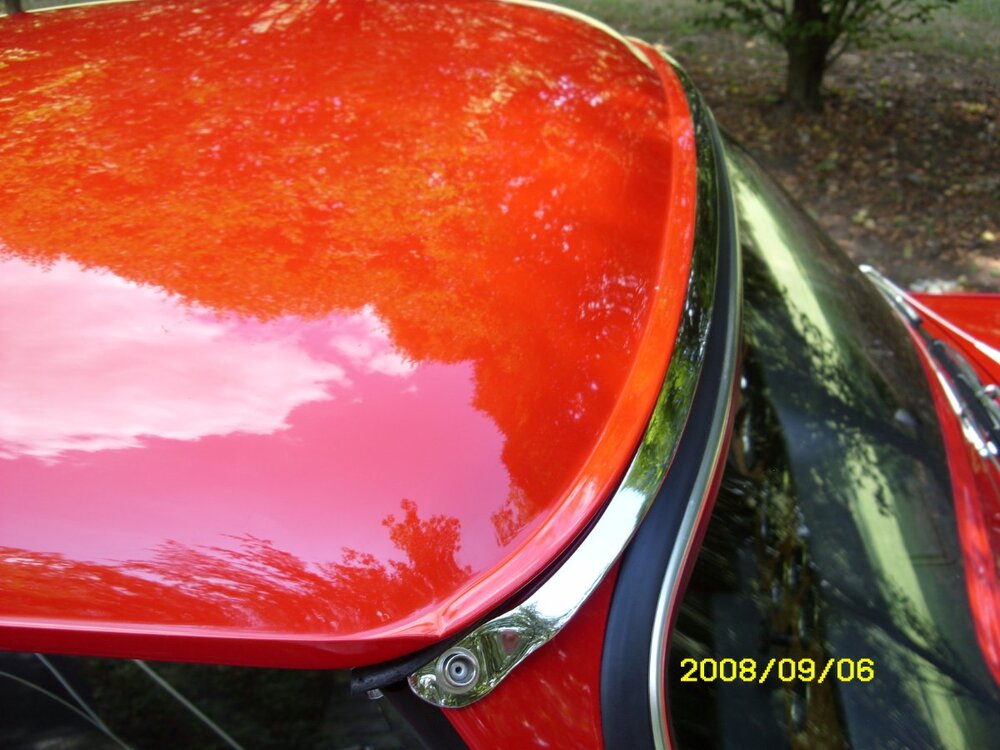
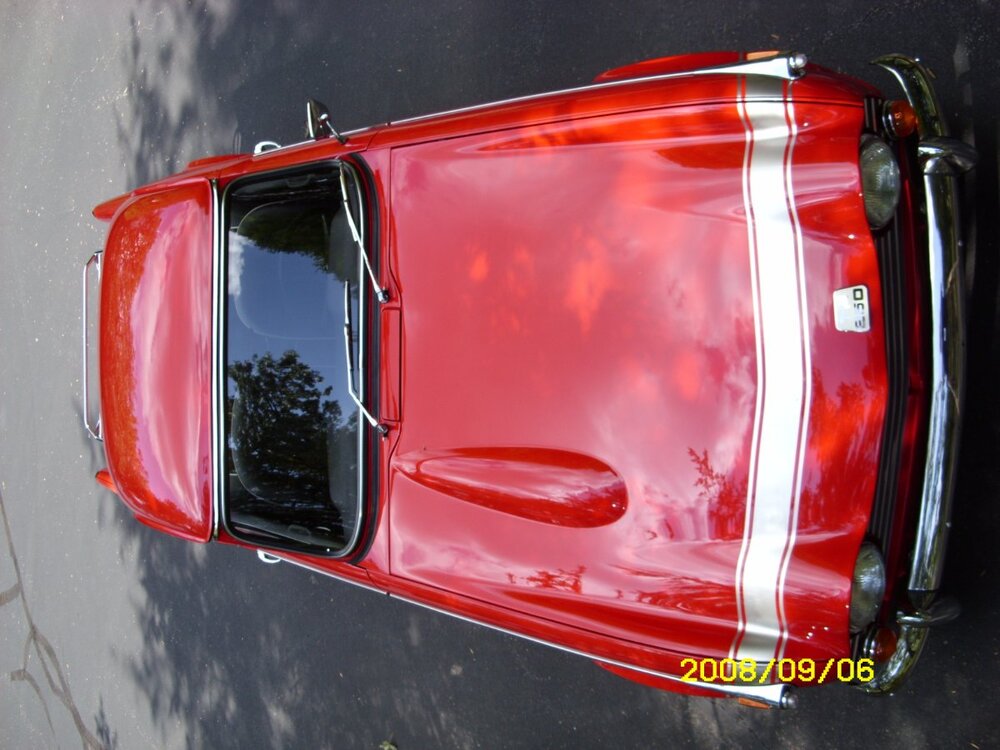
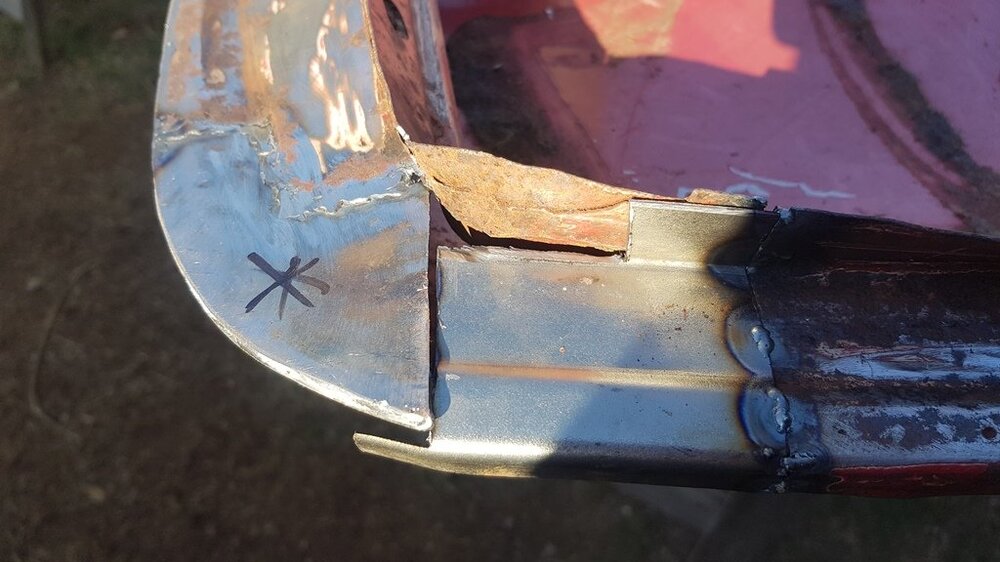
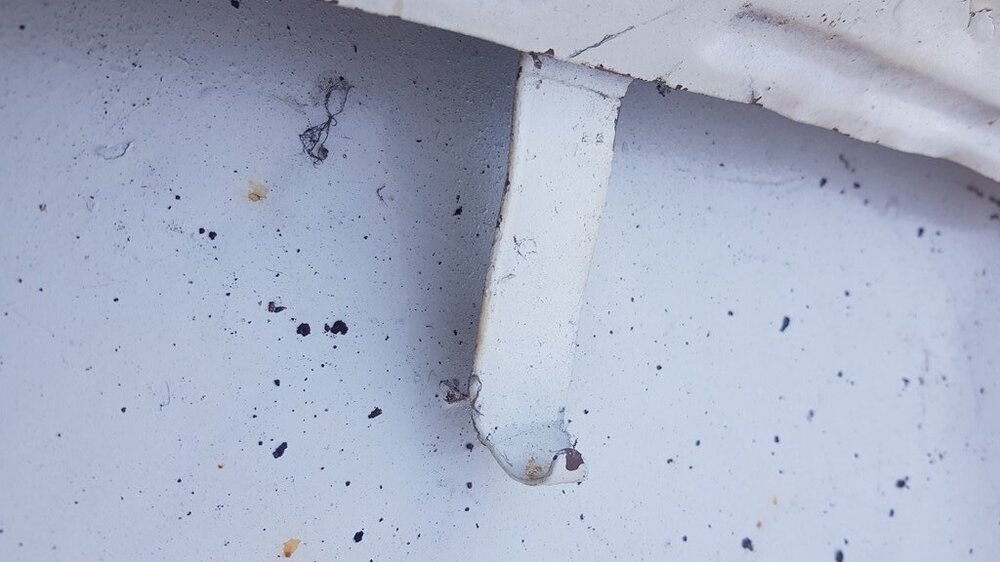
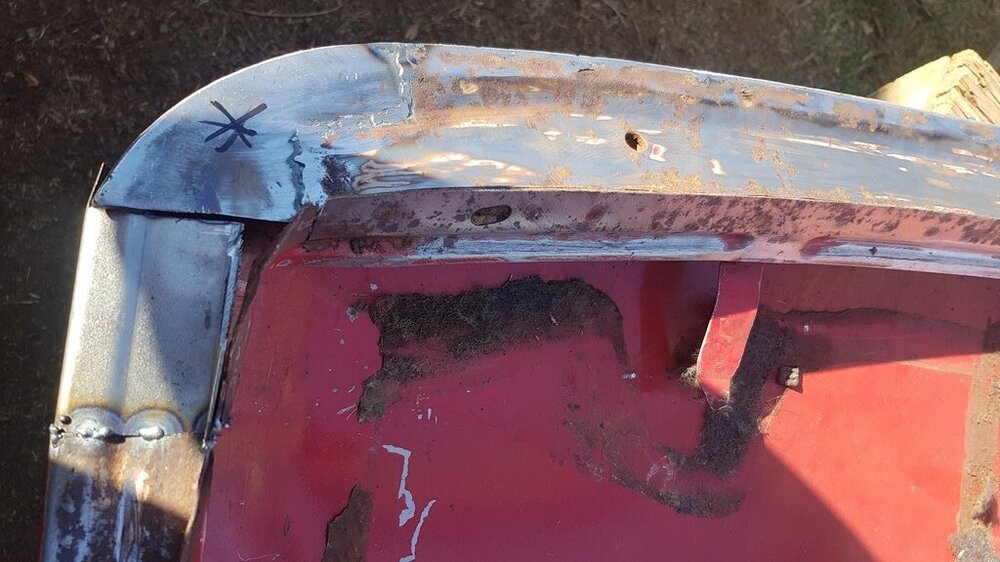
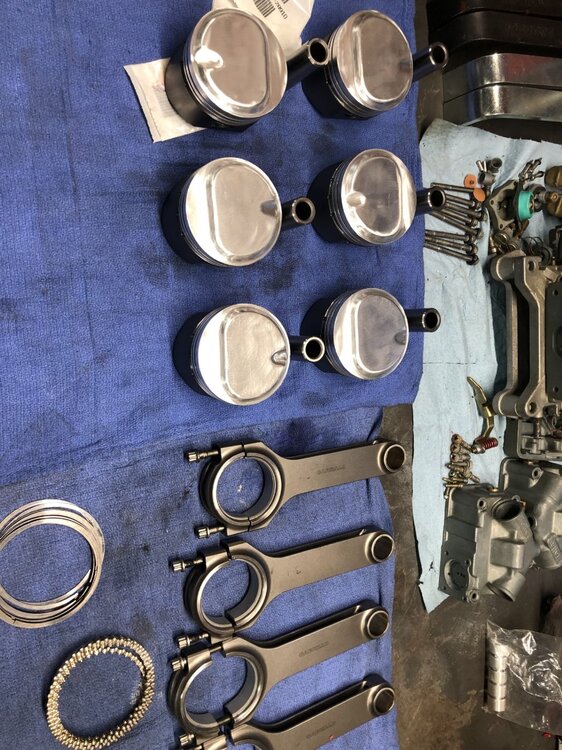
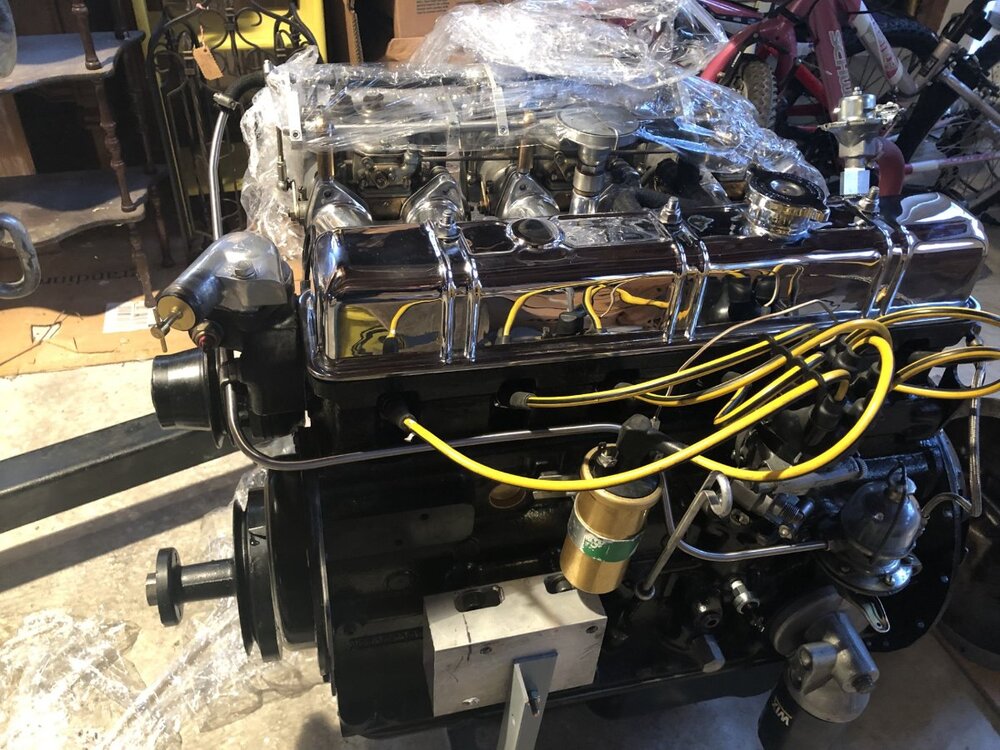
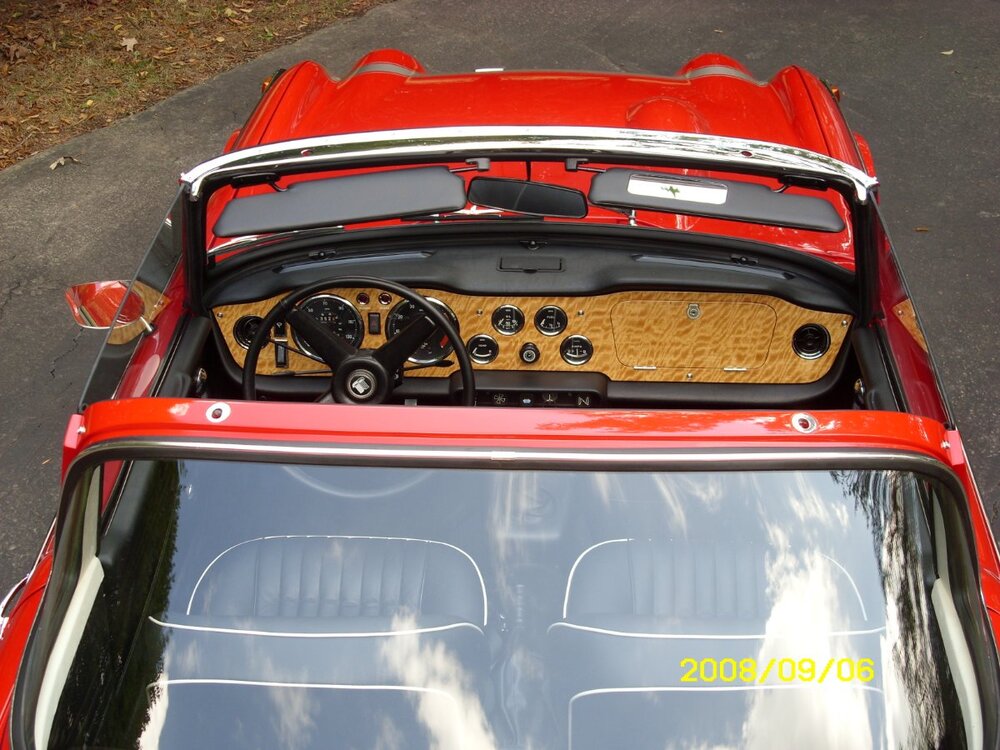

How lucky am I?
in TR5/250 Forum
Posted
The stem works either way round and the mirror can be fitted to either side of the stem as well. The black escutcheon isn't quite symmetrical however so may leave a witness mark if turned the other way.
That was a !@#$% of a find on those mirrors!